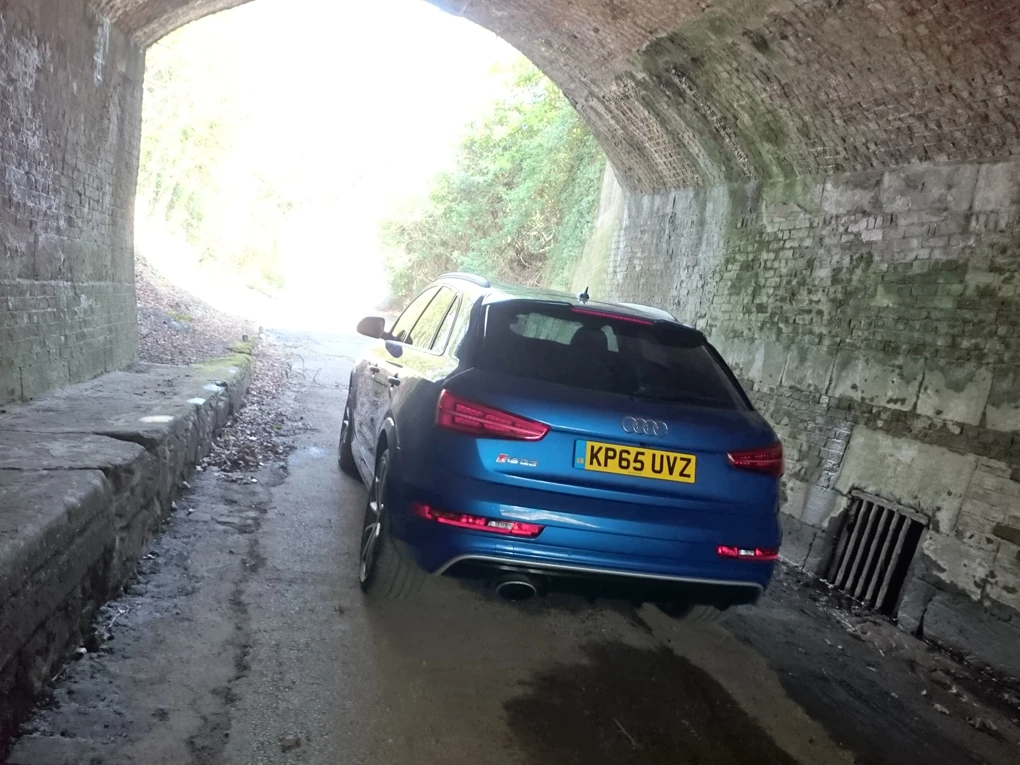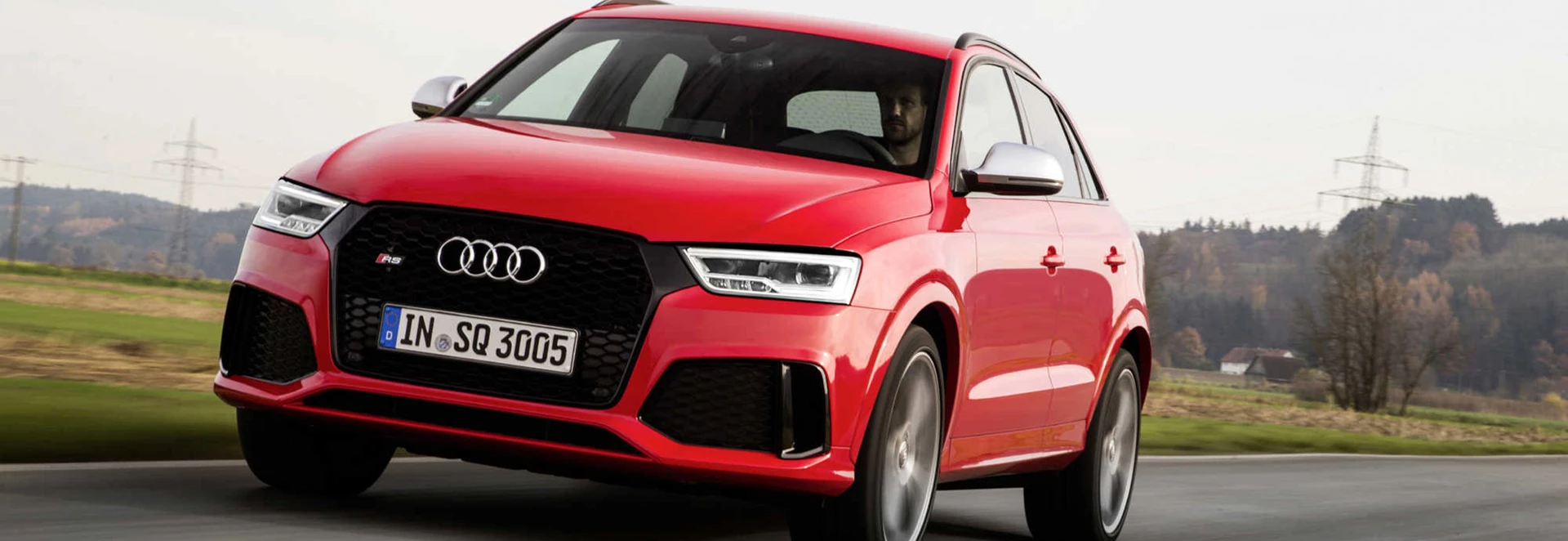The RS Q3 is the performance version of the Q3, which is itself a crossover variant of the A3 hatchback. This is the first Audi crossover to be given the RS badge, and it certainly deserves it. When the car first went on sale, its 2.5-litre five-cylinder turbo petrol engine produced an already impressive 306bhp, but for the 2015 model year this was raised to 335bhp. For 2016, there's an even faster 362bhp 'Performance' option.
Optional extras aside, there is only one form of RS Q3. The engine drives all four wheels through a seven-speed automatic gearbox, just as it does on the faster and cheaper RS 3 Sportback.
There’s very little which realistically can be directly compared to the RS Q3. Neither the BMW X1 nor the Range Rover Evoque is available with anything like the Audi's power output. Other fast crossovers that do offer similar power outputs, however, include the Mercedes GLA 45 AMG, although that has a much lower ride height than the Audi, and the Porsche Macan.
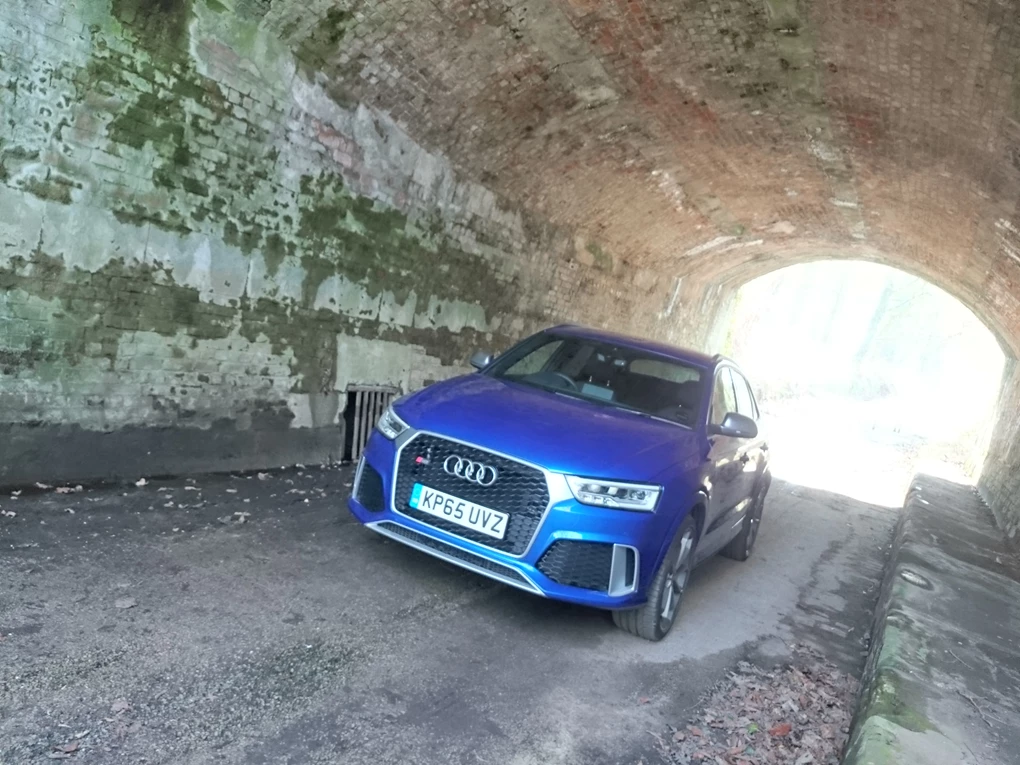
Performance
Since it's taller, heavier and a little less powerful than the mechanically similar RS 3, the Q3 is inevitably slower. But that's not a thought that comes to mind when you're driving it hard. The 0-62mph sprint takes just 4.8 seconds, 0.4 less than it did before the engine upgrade and half a second away from what the RS 3 can manage. The top speed is electronically limited to 155mph, but an unrestricted version could no doubt beat that without much trouble.
The five-cylinder engine makes a wonderfully throaty roar when pushed, and the automatic gearbox is excellent at fast shifts, although the trade-off is the ocassional clunk at lower speeds. The beefy braking system (which includes 365mm front discs and eight-pot calipers) does a fine job of wiping out the speed that can be gained so rapidly, which builds your confidence.
Choose the 'Performance' option and power can even be increased to 362bhp from the factory, cutting 0.4 seconds from the 0-62mph acceleration time. We can't say we ever thought the standard car felt too slow, but it just shows the ferocity of the German power wars.
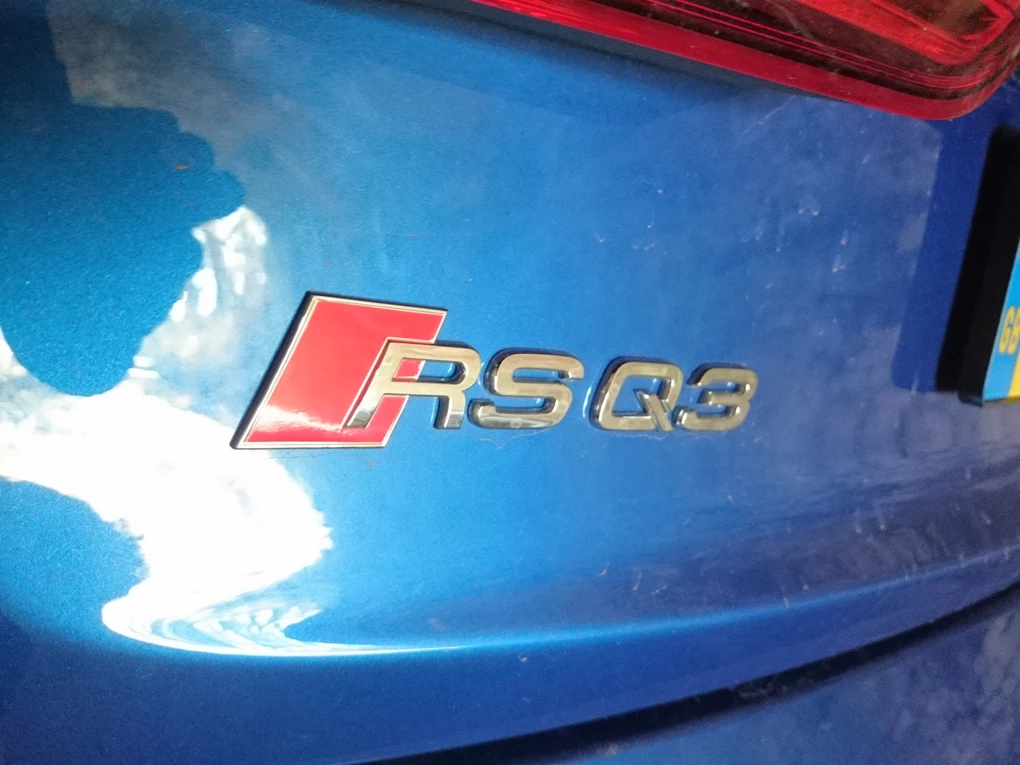
Ride and Handling
We would definitely recommend the £680 adjustable suspension dampers
The 2015 developments did not include any suspension changes, but revisions to the steering mean that it now feels far more controllable. It's still a little numb, but this feels like less of an issue in a crossover than the ultra-precise RS3 'super hatch'. Compared with that car, there's obviously a touch more body roll, and you can feel the four-wheel drive system sending power to each corner more dramatically. If you're after lap times, this might not be ideal, but on the road, we actually found ourselves having more fun, as the extra drama gives the RS Q3 more character than the tied-down RS3. We would definitely recommend the £680 adjustable suspension dampers, as the difference between 'Comfort' and 'Dynamic' is quite dramatic, and makes this a car with transformative qualities. The ride is fairly firm, but not unusually so for a car fitted with 20-inch wheels. The RS Q3 was clearly set up with these in mind, and it copes with them far better than other cars with similar rims, including Audi's own Q5.
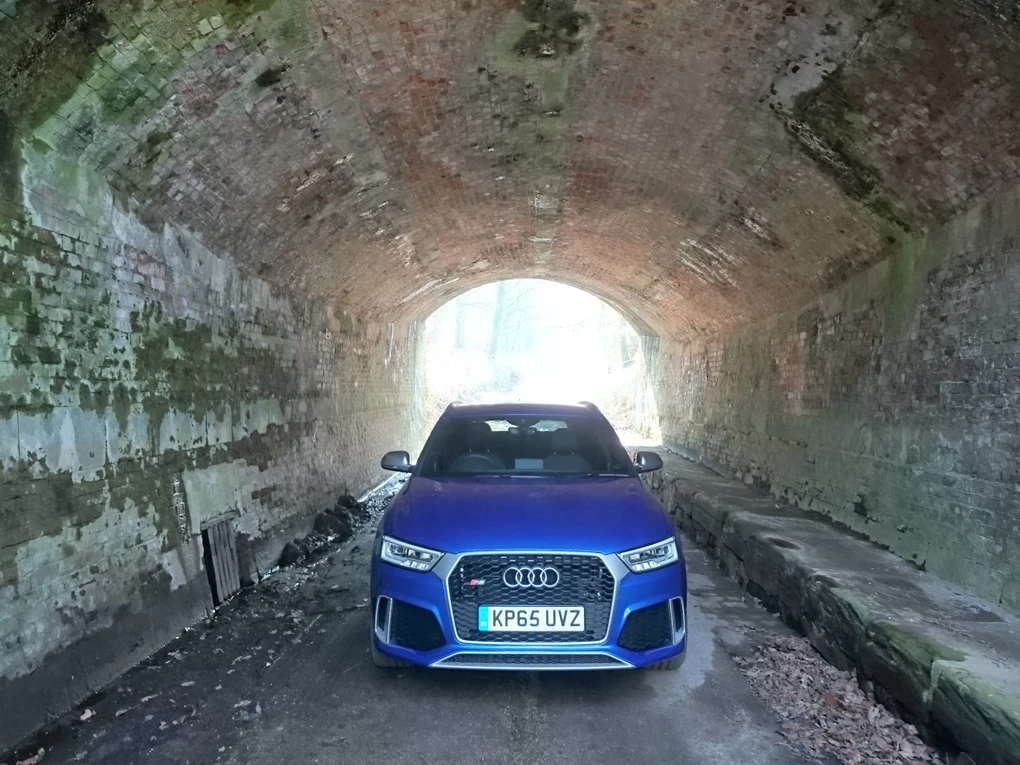
Interior and Equipment
A concept version of the RS Q3 was unveiled at Auto China in Beijing is 2012. The power output was lowered for the early production cars but has now risen to the original level.
Like almost every Audi, the RS Q3 has a very well-finished cabin, with solid materials and attractive finishes. The RS version adds grey sports dials (which read to no less than 200mph) and a flat-bottomed steering wheel with gearshift paddles. Front passengers get a lot of lateral support from the heated and leather-upholstered seats, but choose the leather and Alcantara seats if you want to be gripped even more firmly in place. The Q3 isn't the biggest in the back, but there's just enough headroom and legroom for two average-sized adults for shorter trips. Standard equipment includes DAB digital radio, a powered tailgate and rear privacy glass. You'll need both the Comfort and Technology packs for the best experience though, adding a reversing camera, cruise control, auto high-beam lights and sat-nav. You also get Audi Connect, which brings a 3G internet connection and features like Google Earth maps and traffic updates. It would be reasonable to assume that the RS is roughly as practical as any other Q3. In fact, it falls short by quite a long way. Luggage capacity varies between 356 (seats up) and 1,261 (seats down) litres, which does not compare well with the 420/1,365 of the other versions, or the bigger boots of the GLA 45 AMG or the Macan.
Cost
On the EU combined cycle it averages 32.8mpg
Without optional extras, the RS Q3 costs £45,810, or nearly £5,000 more than the RS 3 Sportback. On the EU combined cycle it averages 32.8mpg, and we managed to obtain similar figures, but only on sedate motorway trips. Attack a B-road and its ecomony figure will tumble rather quickly. Official CO2 emissions are 203g/km, which compares with 172g/km for the GLA 45 AMG and 207g/km for the Macan S. It's hardly a cheap car to buy or run then, but its performane level pushes it into a niche which will be worth the money for some serious RS fans.
Our Verdict
It may not be coincidental that the RS Q3 has barely any direct rivals - there can't be many people who need a compact crossover which can accelerate from 0-62mph in under five seconds. But, being a little less polished than the RS3 has actually given the RS Q3 quite an endearing character. It's effortless to drive and sedate one moment, and like a high-riding rally replica the next. While it will appeal to an admittedly niche audience, those who buy this incredible crossover are sure to have a smile on their faces.
